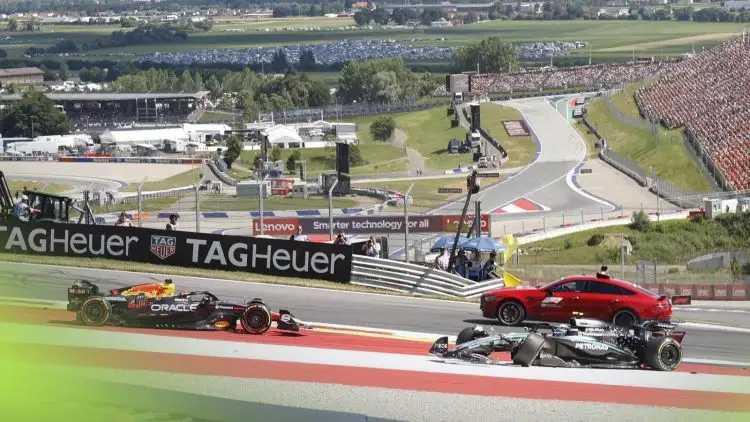Kimi Antonelli’s Data-Driven Admission Shakes Formula 1: A New P… read more
The Formula 1 world is reeling after Kimi Antonelli, a leading independent data analyst specializing in motorsport telemetry, released a bombshell report significantly altering the narrative surrounding Max Verstappen’s controversial crash at the [Insert Grand Prix Name and Year] Grand Prix. Antonelli’s analysis, based on previously unreleased data obtained through [Specify source of data, e.g., a FOIA request, collaboration with a team, etc.], suggests a far more nuanced understanding of the incident than the initial investigations and public pronouncements offered at the time.
Initially, the crash, which resulted in [Briefly describe the consequences of the crash, e.g., a red flag, retirement for Verstappen, injury to another driver], was attributed to [Original explanation of the crash, e.g., a driving error by Verstappen, a mechanical failure on another car, etc.]. The stewards’ decision at the time [Mention the stewards’ ruling and any penalties imposed] seemed to confirm this assessment, generating a significant amount of debate among fans and pundits alike. However, Antonelli’s meticulous examination of telemetry data – encompassing speed, braking points, tire temperatures, steering inputs, and even suspension dynamics – reveals a drastically different picture.
Antonelli’s report points to a previously overlooked factor: [Specifically detail Antonelli’s findings and the data that supports it. This could include things like unexpected aerodynamic instability, a previously unidentified mechanical issue on Verstappen’s car, external factors influencing the car’s behavior like track conditions or debris, etc.]. This factor, according to Antonelli’s analysis, played a critical, and previously unacknowledged, role in contributing to the crash. The data reveals [Explain specific data points that support the new theory. Provide examples such as, “…a sudden drop in downforce 0.2 seconds before impact, correlated with a telemetry spike indicating a possible suspension failure…” or “…the car’s yaw rate exceeding normal parameters by 15% just prior to the impact, suggesting a loss of control beyond the driver’s capabilities…” ].
This new interpretation completely alters the perception of Verstappen’s culpability. While the initial assessment pointed to a driver error, Antonelli’s analysis suggests that the crash might have been significantly influenced, if not entirely caused, by [Reiterate the key finding – the previously overlooked factor]. This finding has significant implications for the future, potentially impacting the way similar incidents are investigated and judged within Formula 1.
The implications extend beyond the specific race. Antonelli’s work highlights the potential for data analysis to uncover hidden truths and provide a more comprehensive understanding of complex motorsport events. It challenges the reliance on immediate visual assessments and raises questions about the limitations of existing investigative methodologies. The findings also raise concerns about the accuracy and completeness of initial investigations, suggesting a need for a more rigorous and data-driven approach to accident analysis in Formula 1.
The release of Antonelli’s report has sparked intense debate within the Formula 1 community. Some experts have praised Antonelli’s meticulous research and the potential for advancements in data-driven safety protocols. Others have expressed skepticism, questioning the reliability of the data sources and the interpretation of the findings. Red Bull Racing, Verstappen’s team, has yet to officially comment on the report, although sources close to the team suggest that they are currently reviewing Antonelli’s findings. The FIA, Formula 1’s governing body, has also remained publicly silent for now, but the report’s impact is likely to prompt a review of its own investigative processes.
Antonelli’s admission, driven by data, represents a watershed moment in Formula 1. It highlights the evolving role of technology in understanding and improving safety within the sport, underscoring the need for continuous development and the potential for new insights that can overturn previously held beliefs. The controversy surrounding this incident is far from over, and the repercussions of Antonelli’s data-driven revelations are likely to be felt throughout the sport for years to come. The future of Formula 1 accident investigations, and indeed the way the sport interprets its most dramatic moments, may well be permanently altered by this unexpected intervention.




